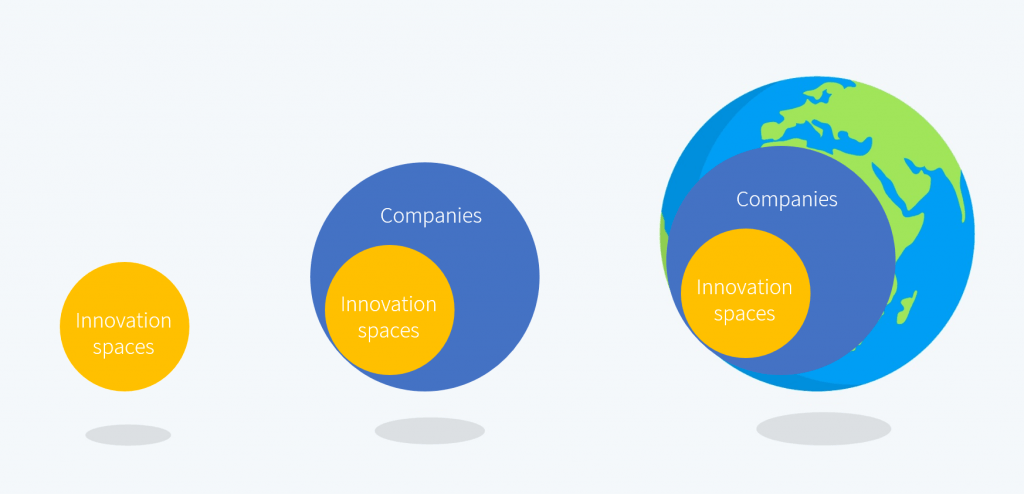
Innovation spaces have multiplied in recent years. The phenomenon saw a 27% growth in 2017, with 87% of big companies having a dedicated space to innovation according to Campgemini’s latest report. Most of the innovation centers opened last year focus on AI (44%) and big data (39%). Israel, for example, has launched over 10 new innovations labs from the start of 2018 by renowned companies like Siemens, Visa, Enel, UPS and Apple.

Innovation spaces are often seen as a recipe for success since they connect big companies with new and promising ideas or start-ups. They are a convenient solution to large organizations, which often struggle with nurturing in-house innovation and with recruiting skilled employees- who usually prefer a younger, less bureaucratic environment. But do innovation spaces really make companies more innovative? Campgemini’s report shows that only 17% of the companies that have a dedicated innovative space, carry out innovation beyond the innovation center itself. Companies like Unilever, Microsoft, Disney, Coca-Cola and British Airways either closed or dramatically downsized their innovation labs these past few years, spreading the belief that 90% of innovation labs are bound to fail.
So what makes an innovation space successful?
There’s no one sure-fire way to succeed but observing the market in the past couple of years proves that in order to make it innovation spaces must be considered a business tool. They should follow business rules and stick to the strategic imperative without getting swept away by the inevitable exciting notions of new tech. Innovation isn’t just about coming up with new ideas. Despite its romantic appeal, it’s also expected be profitable. The key is developing a commercial sensitivity even when the environment is tech-oriented. Innovation spaces aren’t there to score cool points or to hold beanbags- they’re there to deliver value and make profit for the whole corporation.
More than just strategically, innovation spaces have to be directly connected to the needs and goals of their company. It’s often the case that the innovative space, a colorful oddity in a grey corporate slate, has a completely different feel than that of the company. It shouldn’t. Innovation centers are akin to an organ in a body- they have a designated role but should still mind the needs of the entire corporate organism. While the uniqueness of the space should definitely be preserved to maintain its function, it can’t operate as an entire separate entity. That’s why a physical closeness- having the lab in the company building, for instance- is often helpful in ensuring a constant feedback flow and in consolidating a unified corporate identity. Company experience, consumer understanding and insight on the market shared in a closer relationship are especially crucial when the mission is translating ideas to reality.

The connection between the innovative space to the corporate organization extends to the world at large. Innovation isn’t made in a vacuum, and it’s crucial to understand the market (domestic as well as global) and the existing solutions in order to develop a worthy alternative. Oftentimes innovation spaces aren’t about “inventions”, as it were, but focus on tweaking existing solutions to get the best product. Epiphanies don’t always make it to the shelf. Many people before you have probably already recognized the same need and thought up a similar solution. In that sense R&D intelligence is a critical step to understand if your solution is better, and if not- where it falls short compared to others. Realizing the relational nature of the business market is a must if one wants to operate in it.
